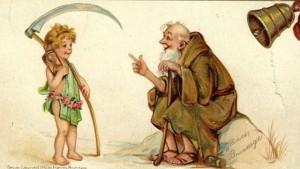Home » Commentary » Opinion » Meet the new political year, same as the old political year
· Canberra Times
 The first week of a new year always feels different — unless you are still hungover, in which case it feels very familiar. But with a clear head, the sense that anything is possible, that things will be changed and better, is almost palpable.
The first week of a new year always feels different — unless you are still hungover, in which case it feels very familiar. But with a clear head, the sense that anything is possible, that things will be changed and better, is almost palpable.
In fact you can almost imagine Malcolm Turnbull bouncing from his (presumably) imported Egyptian cotton sheets on January 1, padding over to his (probably) gold and marble bathroom while humming auld lang syne.
With the rise of Pauline Hanson clipped by the woes of Senator Culleton, several contentious pieces of legislation passing through the ‘unworkable’ Senate, and his old foes in the conservative wing of the Liberal party falling to infighting: the end of 2016 gave Turnbull cause to hope that many of his problems would be manageable in the new year.
“Sure the budget is in as bad shape as ever. But it’s been 10 years of deficits now and no-one has been kicked in the pants for it,” he may have mused.
So 2016, which was either the year democracy died (along with every celebrity ever) or a celebration of the power of the people, is finally done.
Yet the significant changes in the body politic — both here and overseas — could have profound consequences for years to come. The trick is to distinguish these changes from the other important stuff that happened last year.
A good example of this is Pauline Hanson. It is too early to tell whether Hanson can hold her disparate party together now they have a sniff of real power. History is not on her side: as the Palmer United Party, the Australian Democrats and her own party’s prior struggles show.
Hanson may be just a symptom of a much broader fracturing of the political order that was established during and after the fall of communism. Though Hanson, Brexit and Trump are all viewed as right wing phenomena, they actually have the potential to be enduring because they represent new fault lines on the left.
One Nation voters directed preferences almost equally between Labor and Liberal — something unlikely for a party comprised of the hard right (even allowing for any personal anger at the displacement of Tony Abbott). By way of contrast, more than 80% of Greens preferences flowed to Labor.
Trump won because in the end the ‘never Trump’ movement didn’t split the right, while Trump managed to peel a large number of white working class votes off the Democrats (once their core constituency, now voting Trump and Hanson).
Brexit was even clearer cut: the industrial north east, a Labour party stronghold, voted decisively and unexpectedly to leave. The division in the Tories was obvious from the start — the bulk of the Brexit campaign committee were Conservative MPs — the division on the Labour side was far less so.
That is not to say that Turnbull doesn’t also have a problem on the right. Until recently, the Coalition held the right wing vote together in the face of increasing minor party success. While Labor shed almost 15 percentage points in its primary vote in the lower house between 1983 and 2016 (and 10 percentage points since 1993), the Coalition vote has only trended down slightly.
However, the key difference is that although more seats have flowed to minor parties on the left (the old Democrats seats as well as some from Labor) almost all have gone to the Greens, while the seats lost on the right have split between a number of parties.
This is why Labor has been able to contain the damage from their losses so far: their low primary vote is negated on a two-party preferred basis and the Greens give them a workable option in the Senate. In fact, for a moderate like Turnbull, if the Coalition cannot hold the right together it would be better if a single party gathered up all the disgruntled right wing voters in one place rather than the current mess.
Yet that will not help Turnbull this year, a crucial one for him as Prime Minister. It is hard to see how his business-friendly, pro-innovation persona could win over working class voters opposed to immigration and trade. So if the recent shifts in political alignment are enduring, Turnbull’s troubles will continue into this year.
The Hanson / Brexit / Trump fracturing is a true wild card. Turnbull is not Trump and Australia is not the US but the task facing Turnbull is similar. He must bring disparate forces together if he is to succeed this term.
Simon Cowan is Research Manager at the Centre for Independent Studies, which will live-stream a public forum: Trump in Oz — Could ‘The Donald’ Happen Here? on February 2.
Meet the new political year, same as the old political year